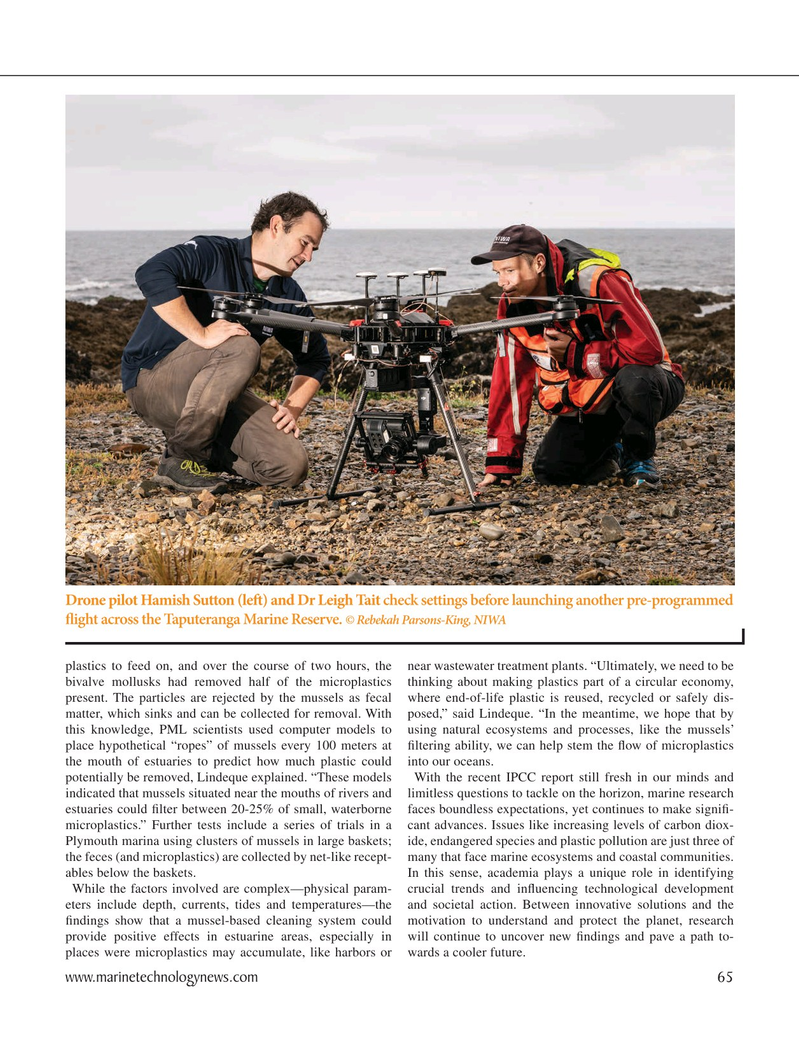
Page 65: of Marine Technology Magazine (September 2021)
MTR100: Focus on 100 Leading Companies, People and Innovations in the Subsea Space
Read this page in Pdf, Flash or Html5 edition of September 2021 Marine Technology Magazine
Drone pilot Hamish Sutton (lef ) and Dr Leigh Tait check settings before launching another pre-programmed f ight across the Taputeranga Marine Reserve. © Rebekah Parsons-King, NIWA plastics to feed on, and over the course of two hours, the near wastewater treatment plants. “Ultimately, we need to be bivalve mollusks had removed half of the microplastics thinking about making plastics part of a circular economy, present. The particles are rejected by the mussels as fecal where end-of-life plastic is reused, recycled or safely dis- matter, which sinks and can be collected for removal. With posed,” said Lindeque. “In the meantime, we hope that by this knowledge, PML scientists used computer models to using natural ecosystems and processes, like the mussels’ place hypothetical “ropes” of mussels every 100 meters at ? ltering ability, we can help stem the ? ow of microplastics the mouth of estuaries to predict how much plastic could into our oceans.
potentially be removed, Lindeque explained. “These models With the recent IPCC report still fresh in our minds and indicated that mussels situated near the mouths of rivers and limitless questions to tackle on the horizon, marine research estuaries could ? lter between 20-25% of small, waterborne faces boundless expectations, yet continues to make signi? - microplastics.” Further tests include a series of trials in a cant advances. Issues like increasing levels of carbon diox-
Plymouth marina using clusters of mussels in large baskets; ide, endangered species and plastic pollution are just three of the feces (and microplastics) are collected by net-like recept- many that face marine ecosystems and coastal communities. ables below the baskets. In this sense, academia plays a unique role in identifying
While the factors involved are complex—physical param- crucial trends and in? uencing technological development eters include depth, currents, tides and temperatures—the and societal action. Between innovative solutions and the ? ndings show that a mussel-based cleaning system could motivation to understand and protect the planet, research provide positive effects in estuarine areas, especially in will continue to uncover new ? ndings and pave a path to- places were microplastics may accumulate, like harbors or wards a cooler future.
www.marinetechnologynews.com 65
MTR #7 (50-65).indd 65 9/21/2021 11:37:30 AM

 64
64

 66
66
